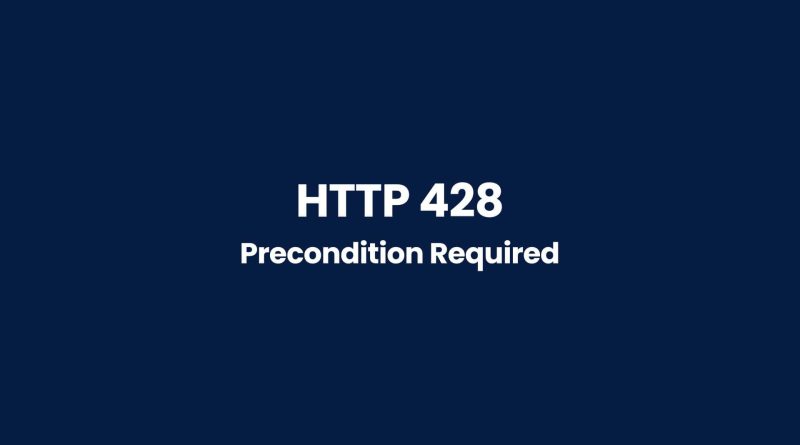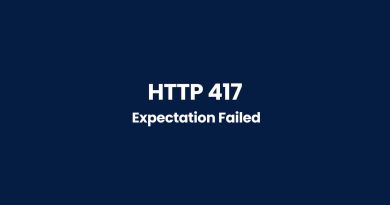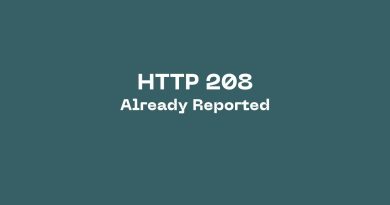HTTP 428 Error Code: A Comprehensive Guide to Understand and Fix It
The Hypertext Transfer Protocol (HTTP) is an integral part of the internet, responsible for how websites are accessed and delivered to users. As such, it’s important that HTTP functions correctly. However, sometimes technical issues arise in the form of error codes – one of the most common being HTTP 428. This guide will provide a comprehensive overview of this particular error code, outlining its causes and potential solutions.
Overall, this article aims to explain exactly what HTTP 428 is and provide readers with practical advice on troubleshooting any related issues they may encounter while developing webpages. With detailed analysis backed up by real-world examples, this guide should equip anyone looking for more information with all the necessary tools required for a successful resolution.
What Is 428 Http Status Code?
The 428 HTTP status code is a required response status code, indicating that the origin server requires the request to be sent again with certain required precondition header set. It is an error generated when requests are made using the PUT HTTP method. The purpose of this status code is to ensure no incorrect copies of resources exist in different places on the web.
This particular type of HTTP status code plays an important role in ensuring that all responses from servers are valid and up-to-date. This means that only correct versions of documents or other types of data can be presented by websites. If a client sends a GET method but fails to include necessary information as part of the request, such as authentication credentials, then it will receive a 428 response from the server.
Cause Of 428 Http Status Code Error
The HTTP 428 status code, or “Precondition Required”, is a response from the server when it requires certain conditions to be met before fulfilling a request. This can manifest as a lost update issue which arises due to conflicting changes made to a resource’s state after the client makes its initial request but before the server processes that request. If a condition set by either of the parties does not match (if-match), then this status code will appear in order for the server to inform the client about what needs to occur next.
This error is an example of one of many 4xx classifications of status codes used by web servers to indicate varying types and levels of failure-related requests. In particular, these indicate issues that are caused on the client side rather than server-side – however, determining whether an issue is being caused by either side can be difficult without additional investigation.
Here are 4 important things to keep in mind while dealing with HTTP 428 errors:
- Precondition Failed and Precondition Required to refer to two separate yet closely related concepts regarding how resources should behave during their lifetime.
- Status codes such as 428 help clients identify potential sources of errors such as lost updates.
- A key challenge with troubleshooting these kinds of errors lies in correctly distinguishing between issues originating on either the server or client-side.
- Understanding both precondition failed and required states is critical when attempting to resolve any conflicts arising out of them.
Server Side Or Client Side Issue?
It’s worth noting that while the error message may suggest a client-side issue, this isn’t always the case as sometimes there could be an underlying problem on either side that causes it. In other words, when troubleshooting 428 errors you have to determine if it’s originating from either the server or client before attempting any fixes.
How To Fix 428 Http Status Code Error
When faced with a 428 HTTP status code error, the origin server cannot process the request correctly. This is usually caused by conflicting updates and lost update problems that can occur when third parties are involved in a use case. Fortunately, there are steps you can take to fix this issue.
First, it’s important to understand what is causing the conflict. Once identified, you’ll need to have both sides of the transaction put their conditional requests back so they sync up properly before sending them again. Doing this puts it back into alignment on the client side and allows for successful completion from the server side.
The second step is to control who has access to modify or delete data within your system. By limiting access only to those authorized users, lost update issues will be less likely when multiple third-party sources interact with each other via HTTP requests. Additionally, implementing additional levels of authentication such as two factor authentication can help minimize potential conflicts related to authorization failures involving malicious actors attempting unauthorized changes or deletions through API calls .
It’s also important to continually monitor performance metrics closely during development cycles so any errors like these can be quickly detected and fixed before they become too problematic. Utilizing automated testing tools such as Selenium web driver can aid in running continuous integration tests which enable quicker feedback loops when debugging issues like these.
Similar Http Status Codes To 428
The 403 Forbidden and 401 Unauthorized response codes have similar meanings as 428 but represent different stages of authentication. While a 428 error implies conditions need to be met before an action can take place, 403 means the request was validly made but rejected outright due to lack of authorization, while 401 means the user needs to supply credentials first before making their request. As for other 4xx class responses, 404 Not Found states the requested item does not exist on the server; 409 Conflict suggests there is already an existing instance of what you’re trying to create or modify; and 410 Gone indicates an item previously available no longer exists at its original URL and should not be retried again in future requests.
All HTTP status codes by categories
Informational responses
(100 – 199)



